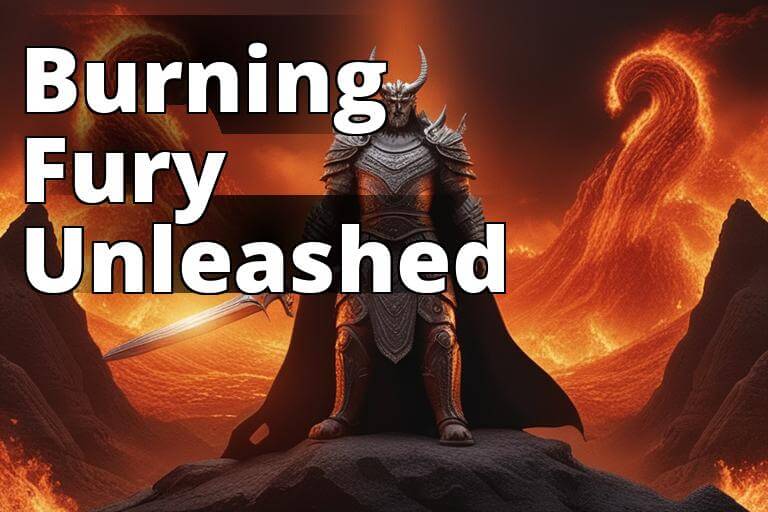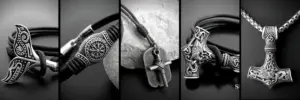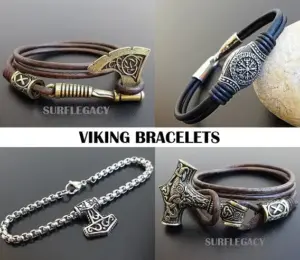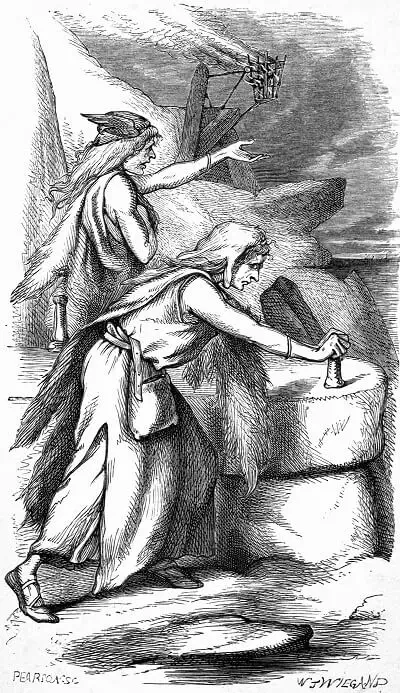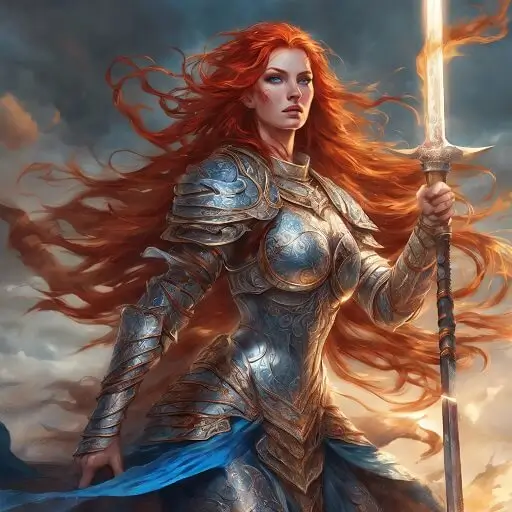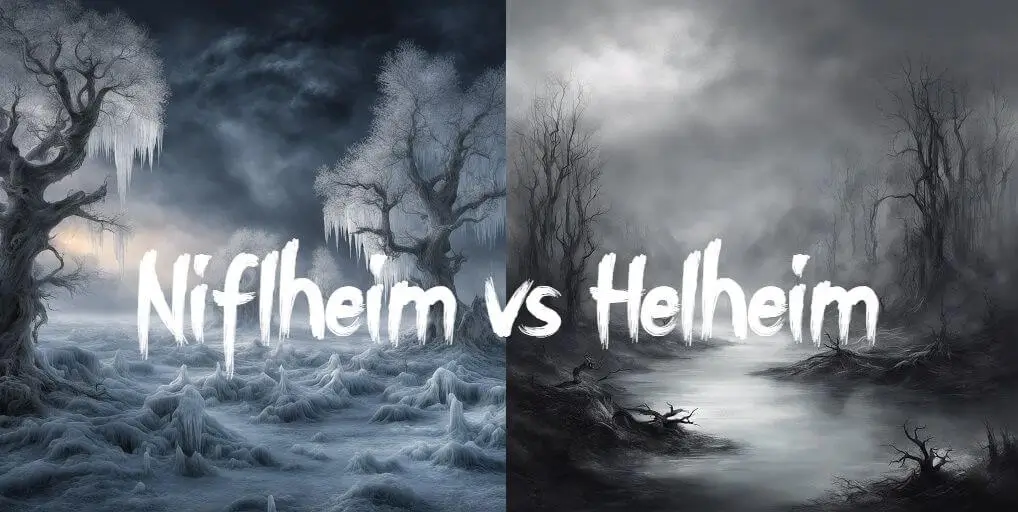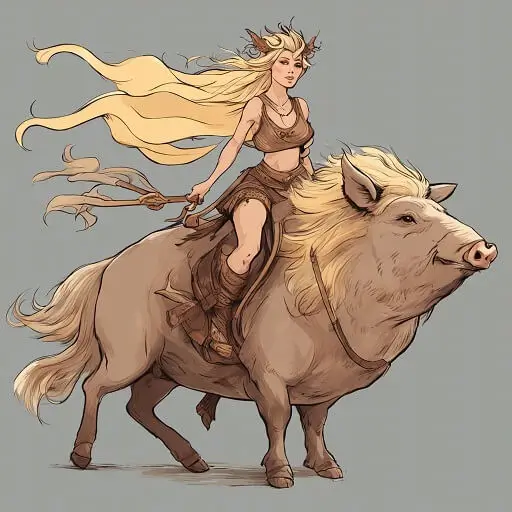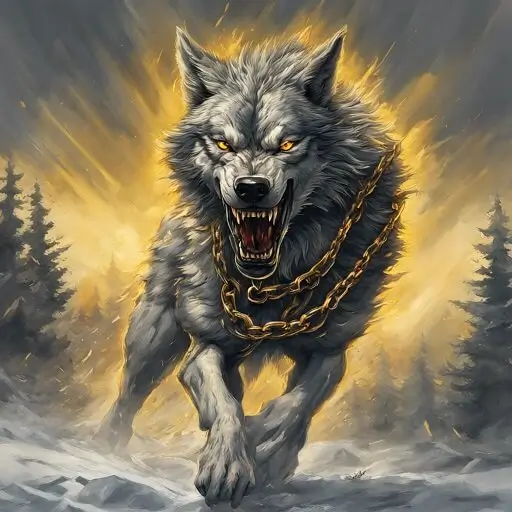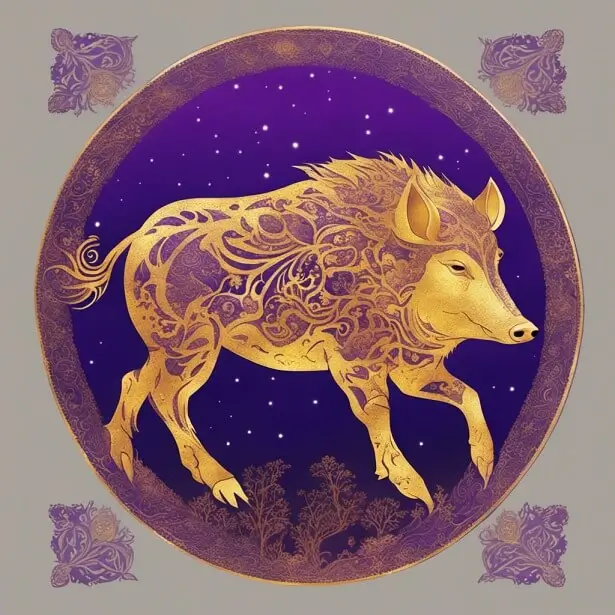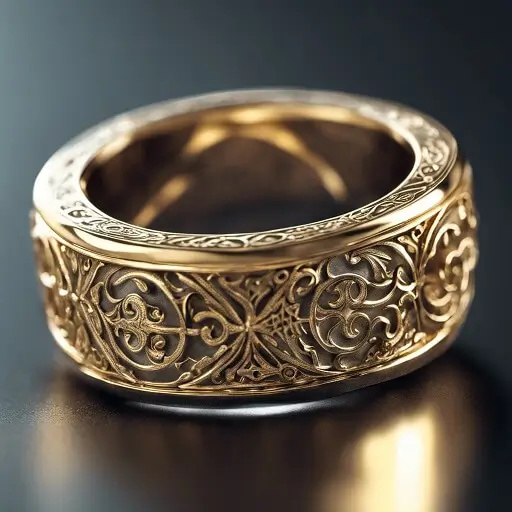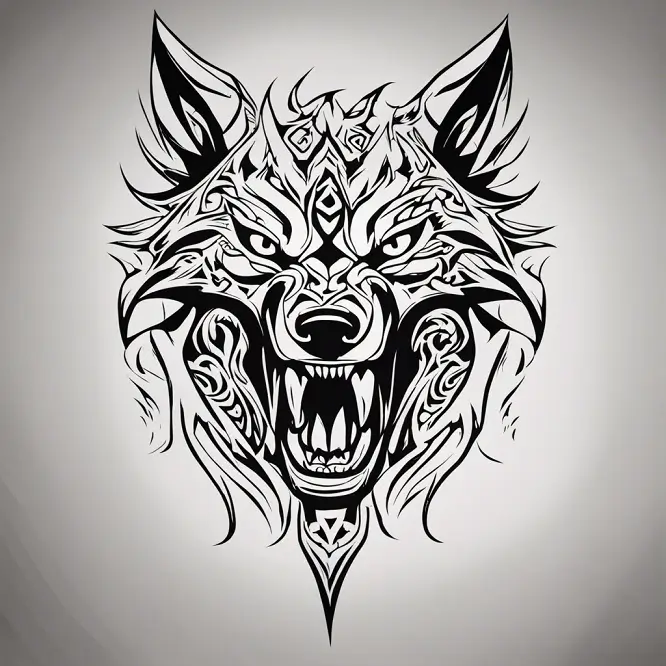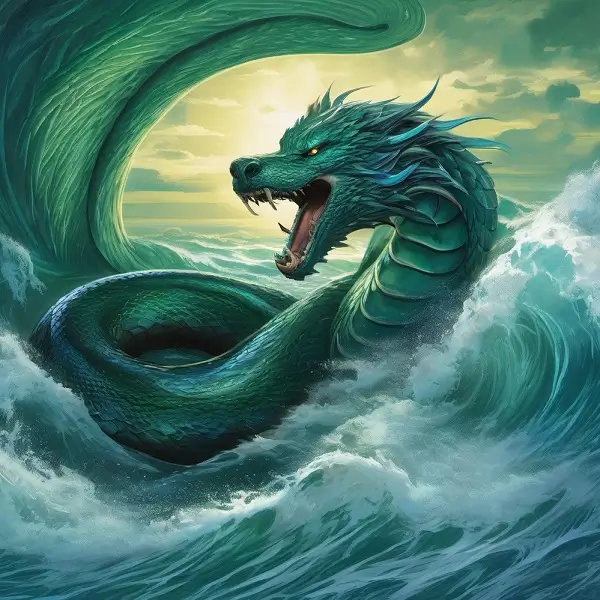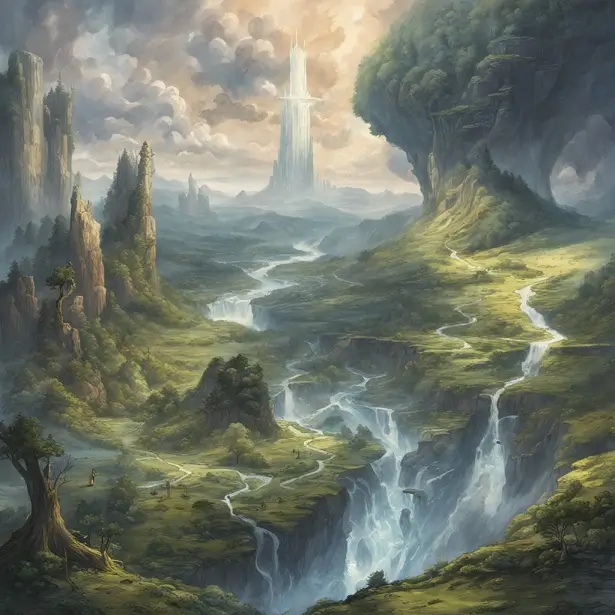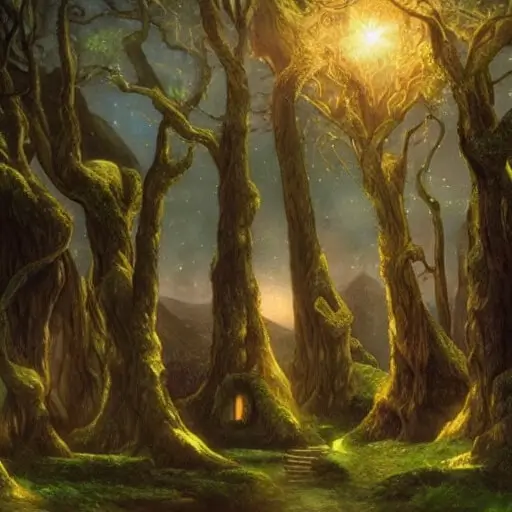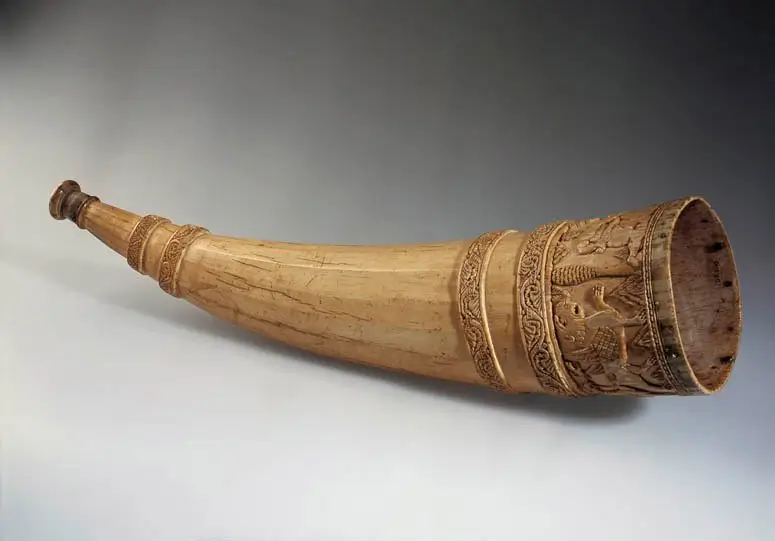Muspelheim, the blazing land of fire and home to the fire giants, holds a prominent place in Norse mythology. It plays a pivotal role in both the creation and destruction narratives of the Norse cosmos, leaving a lasting cultural legacy.
In this article, we will explore Muspelheim’s origins, its role in Ragnarok, its inhabitants, interactions with other realms, and its symbolism in Norse culture.
What readers will learn from this article:
- The origin and description of Muspelheim in Norse mythology, including how it was created and its fiery landscape of lava seas, flaming rivers, and ashen plains.
- The role of Muspelheim in Ragnarok, the apocalyptic event in Norse mythology, and the pivotal role of Surtr, the ruler of Muspelheim who leads the Sons of Muspell.
- The deities associated with Muspelheim and its interactions with other realms in Norse cosmology.
- Connections between Muspelheim’s fiery landscape and Iceland’s volcanic features that may have resonated with Viking perceptions.
Key Takeaways:
- Muspelheim is the fiery realm in Norse mythology, ruled by the fire giant Surtr and inhabited by races of fire giants.
- Muspelheim originated at the dawn of creation and its flames played a key role in forming the Norse cosmos.
- Muspelheim’s fire giants, led by Surtr, will destroy the world in the apocalyptic battle of Ragnarök before a new world is born.
- Iceland’s volcanic fires and lava may have evoked Muspelheim’s image for the Viking discoverers and settlers.
- While Muspelheim is perilous for gods and people, its mythic symbolism of fire’s destructive yet creative power still resonates.
- Muspelheim represents a central Norse concept – the idea that opposing elemental forces are interconnected in shaping existence.
Origin and Description of Muspelheim
Muspelheim originated from the primordial void known as Ginnungagap, which interacted with Niflheim, the icy realm. Ginnungagap was the void that existed before the creation of the cosmos, and the interplay of fire and ice gave rise to the universe.
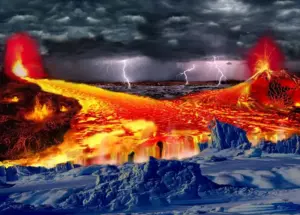
Ginnungagap
Muspelheim emerged as a realm of fire and chaos, filled with seas of lava, flaming rivers, and ashen plains. This starkly contrasted the frozen landscapes of Niflheim.
The intense heat and flames make Muspelheim inhospitable to most beings, and only those aligned with fire and chaos can thrive there. It is a place of constant movement and change, with eruptions and explosions shaping the fiery landscape. The Vikings who discovered Iceland may have seen similarities between its volcanic features and Muspelheim’s destructive yet transformative nature.
The Poetic Edda and Prose Edda provide early attestations of Muspelheim, its fiery features, and inhabitants like the fire giant Surtr. Other sagas found in the medieval Icelandic Flateyjarbók offer additional texture, like references to Logi, personification of wildfire, and his fire-related family – wife Glöð and daughters Eisa and Eimyrja.
However, there seem to be no tales of the gods adventuring in Muspelheim, likely because it was too inhospitable even for them. This may suggest there were more lost stories about Muspelheim that would have offered greater detail about the fiery realm.
Surtr: The Ruler of Muspelheim
At the heart of Muspelheim stands Surtr, the powerful ruler of the realm and leader of the Sons of Muspell. Surtr is the leader of the fire giants and is associated with destruction and chaos. He wields a flaming sword, representing his immense power and role as a catalyst for change. Surtr plays a pivotal role in Ragnarok, the apocalyptic battle that brings about the end of the world.

Muspelheim’s Role in Ragnarok
Ragnarok is the cataclysmic event in Norse mythology that marks the end of the current world and the beginning of a new one. Muspelheim plays a crucial role in Ragnarok as the realm from which Surtr and the fire giants emerge. Surtr leads the charge against the gods, wielding his flaming sword with devastating effect. The clash between the gods and the fire giants results in the destruction and subsequent rebirth of the world.f
During Ragnarok, Surtr engages in a fiery battle with the god Freyr. This clash symbolizes the triumph of chaos and destruction over order and harmony, as Freyr meets his demise. The destruction caused by the fire giants and the cataclysmic events that reshape the world are a direct result of Muspelheim’s influence.
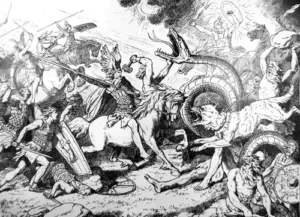
Ragnarok by Johannes Gehrts (1855-1921)
Deities Associated with Muspelheim
Aside from Surtr, Muspelheim is also associated with other deities and beings.
- Logi – A fire giant who appears in the Prose Edda story where he competes in an eating contest against Loki, consuming even the bones and trough. As the personification of wildfire who exhibits powers connected to Muspelheim, Logi likely inhabited the fiery realm.
- Glöð and daughters – Logi’s fiery family members named in the Icelandic sagas, including his wife Glöð and daughters Eisa and Eimyrja, embodiments of glowing embers and embers. As extensions of Logi’s personification of fire, they may have also inhabited Muspelheim.
- Eldjötnar – The race of fire giants who inhabit Muspelheim, engulfed in flame. They serve under Surtr’s command as the realm’s natives and army.
- Muspells synir – The “sons of Muspell”, fiery warriors mentioned in the Poetic Edda who will march with Surtr out of Muspelheim during Ragnarök. They likely comprise the legions of Eldjötnar under Surtr who reside in Muspelheim.
Interactions with Other Realms
Muspelheim interacts with other realms in Norse cosmology, particularly with Niflheim, the realm of ice. The interplay between Muspelheim’s fire and Niflheim’s ice gave birth to the primordial void, Ginnungagap, from which the world was formed. This interaction resulted in the creation of Ymir, the first being in Norse mythology.
Muspelheim’s proximity to Asgard, the realm of the Aesir gods, suggests potential conflicts between the two realms. Asgard represents order and civilization, while Muspelheim embodies chaos and destruction. The clash between these opposing forces adds depth and tension to the Norse mythological narrative.
Muspelheim’s influence is not limited to the realm of gods and giants. It also has potential connections to Midgard, the realm of humans. Fire has always played a crucial role in human civilization, providing warmth, light, and the means to cook food. Muspelheim’s association with fire may have influenced the development of human culture and the values associated with it.
Symbolism and Cultural Significance
Muspelheim holds deep symbolic meaning in Norse mythology as the embodiment of fire’s dual nature of creation and destruction. Its flames represent the transformative primal forces that shaped the universe, destroying the old to bring forth new life and potential.
The Vikings who discovered Iceland’s volcanic fires may have seen reflections of Muspelheim’s destructive yet regenerative nature. The interplay between Muspelheim’s fire and Niflheim’s ice that birthed life resembles the balance of elements in Iceland’s contrasting glaciers and lava flows.
In Norse society, fire filled an essential role in ceremonies to signify purification and transformation. Muspelheim’s influence manifests in cultural values like courage, resilience, and adaptability – qualities forged in flame.
Today, Muspelheim’s chaos and fiery power continues capturing imagination across modern media. Exploring Norse mythology and Muspelheim provides insights into ancient perspectives on existence while illuminating an enduring legacy that still burns bright in culture and storytelling.
FAQs
Who is the ruler of Muspelheim in Norse mythology?
Muspelheim is ruled by the fire giant Surtr.
What is the significance of Muspelheim in Norse mythology?
Muspelheim is the realm of fire and is one of the Nine Worlds in Norse mythology.
How was Muspelheim created in Norse mythology?
Muspelheim was formed from the sparks and flames that originated in Ginnungagap.
What role does Muspelheim play in the creation of the world in Norse mythology?
Muspelheim’s fire combined with the ice of Niflheim to create the first living being, Ymir.
How does Muspelheim connect with Ragnarok in Norse mythology?
Muspelheim plays a crucial role in Ragnarok, the final battle, where Surtr leads the fire giants.
But isn’t Muspelheim dangerous for the gods and humans in Norse mythology?
Yes, Muspelheim is a dangerous realm for gods and humans due to its intense heat and flames.
What is the difference between Niflheim and Muspelheim?
Niflheim and Muspelheim stand in stark contrast as the icy and fiery realms in Norse mythology. Niflheim was a world of darkness, cold, and mist – an inhospitable frozen land sometimes equated with Helheim, the underworld. Muspelheim was its opposite: a burning realm of lava, flames, and fire giants.
While Niflheim was conceived as a frigid, still world, Muspelheim was imagined as swirling with chaotic energy and heat. Yet both realms came together in the creation story, their interaction giving birth to life.
So while complete opposites, Niflheim and Muspelheim jointly represent the mystical forces of ice and fire that the Norse beliefs saw as fundamental elements shaping existence. Their interplay brings balance, though they spell doom when unrestrained in Ragnarök.
Conclusion
Muspelheim occupies a pivotal place in Norse cosmology as the fiery realm of chaos and destruction. From its primordial origins to its apocalyptic role in Ragnarök, Muspelheim’s scorching forces continually shape the destiny of the Norse worlds.
Ruled by the fearsome Surtr and inhabited by races of flame-wreathed giants, Muspelheim epitomizes the awesome power of fire’s simultaneously creative and destructive essence.
The vivid volcanic image of Muspelheim may have even inspired awe in the Viking discoverers of Iceland’s geothermal wonders.
Though inherently perilous for gods and mortals alike, Muspelheim’s mythic glow continues to captivate the imagination as a reminder of the untamable, transformative brilliance that fire holds over humanity.
See also:
The Magical Realm of Asgard: Home to the Aesir in Norse Mythology
Niflheim: The Primordial Realm of Ice and Mist in Norse Mythology
Vanaheimr: The Realm of the Vanir Gods
Alfheim: The Luminous Realm of the Elves in Norse Mythology
Helheim: The Norse Mythological Realm of the Dead
Shop Norse Jewelry
Are passionate about Norse Mythology?
Finding the ideal piece of Norse Jewelry can be challenging and time-consuming, especially if you lack inspiration or don’t know where to look.
Surflegacy, has you covered. We have a wide range of Handmade Jewelry in various styles, shapes, colors, and materials, to accentuate your Norse spirit and look. Do not hesitate to visit our selection HERE
Whatever you wear, you’ll find the ideal trendy piece to complement your wardrobe. Our jewelry is designed to be worn every day, no matter where you go or what season is. Are you ready to step up your wardrobe game?

